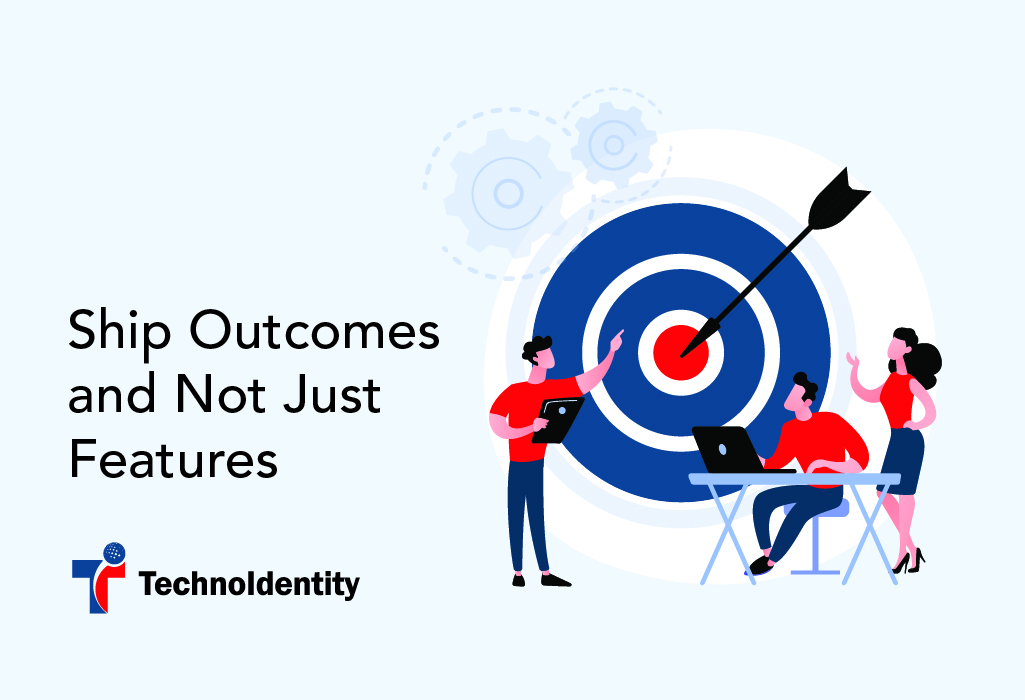
Ship Outcomes And Not Just Features
Product planning is an extensive process, one of the common mistakes being focusing on outputs over outcomes. Without a solution to a particular problem in mind, you end up discussing what to create before defining its purpose. A large number of products fail because they do not succeed in fixing a critical issue. Since the product does not provide relief for a pain point, it won’t succeed, even if it is built well. Before building a product and designing its specific features, you must recognize the problem that needs to be addressed. Else, regardless of how well a product is built, it will be worthless if it does not serve a purpose. Businesses, especially early-stage startups, focus on the big picture which can be overwhelming and often waste resources over an idea that does not align with their goals.
Output vs Outcomes
An output is a product or service that you create whereas an outcome is a problem you solve by creating that product. The difference between the two can be highlighted by differentiating between feature and benefit. A feature is something a product or service offers, while a benefit is the result of a feature that the customers want. Marketing is done using the benefits to turn heads, displaying a long list of features is simply dull. Benefits help you identify the right features that need to be developed. Creating output is an obvious necessity but it should not be the center of the project. With an outcome as the focal point, it provides a straightforward path to your ultimate goal.
Unreliability of Output Focus
The mistake of delivering too many features can make you come up short of your intended targets and can also make it more difficult to evaluate which features are necessary and which ones are redundant. Scaping too many features after their completion also result in a waste of resources and opportunities, which startups cannot afford. That being said, the outcome itself should be attainable and measurable as well as valuable to the user and the business. Something like users should be able to create a profile in half the time. So a team of people sharing their ideas and utilizing their creativity and experience can make the sign-up process more effortless with less friction and blockage to reduce the time taken, instead of the product manager delivering a feature upfront.
What steps can be taken to ensure Output value?
You want to anticipate accurate user expectations and minimize risk. How do you go about that? To internalize the principle of shipping outcomes there are several tactics you can use.
- 1. State the Problem
As a team, work towards understanding what problem the user is facing that you are trying to solve. Figuring out which group is benefitted may give you ideas to form a solution.
- “Which pain points that users are facing need to be solved?”
- “Who benefited from the solution?”
- “Does this align with your business goals?”.
The questions help to provide a structure to the solution. Outcomes need to satisfy both user goals and business goals ( NN Group ). If you have the resources to build, don’t just build anything.
- 2. Gather User Data
Use existing data to analyze the information and draw conclusions on what the customers want and need to back up your ideas. Information provided by them or statistics drawn from their actions and preferences is more reliable than what you can assume. Perform any additional research required to fill any gaps and answer questions before making any major product decisions.
- 3. Define Core Competencies
Core Competencies are the resources and skills that comprise the strategic strengths of a business. The unique skill or technology that gives you that edge over others. Knowing what you’re good at and what you do keeps you focused on building the right features.
- 4. Set Goals and Success Criteria
Specifying a goal that is to be achieved can give a clearer view of how to navigate to it successfully. Success criteria can help to measure whether the solution formed meets the required objective. It will help to ensure that there is no deviation during the process of product creation.
- 5. Test Various Ideas
Work as a team and encourage creativity. Different people provide a variety of perspectives towards a solution and bring new ideas to the table. Not only does it promote effective communication through dynamic activities but it can also cover multiple potential possibilities while avoiding wastage of resources.
Conclusion
The more time spent on research and gathering information to strategize, the better. Chasing goals without a plan on how to achieve them can be disastrous. Outcome-led projects already lay out the benefits of advertising it better. To use resources efficiently and effectively to yield valuable results, recognize which approach to use. Know and understand the problem before trying to solve it. Finding a balance between shipping outcomes and features is vital. Not every project is strictly relying on just one of them. Adjusting to the project and not jumping back and forth blindly is imperative.


